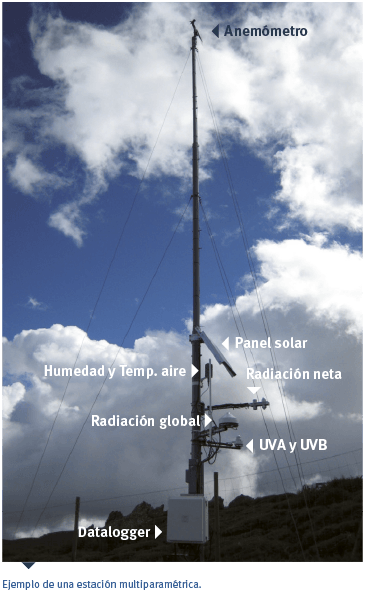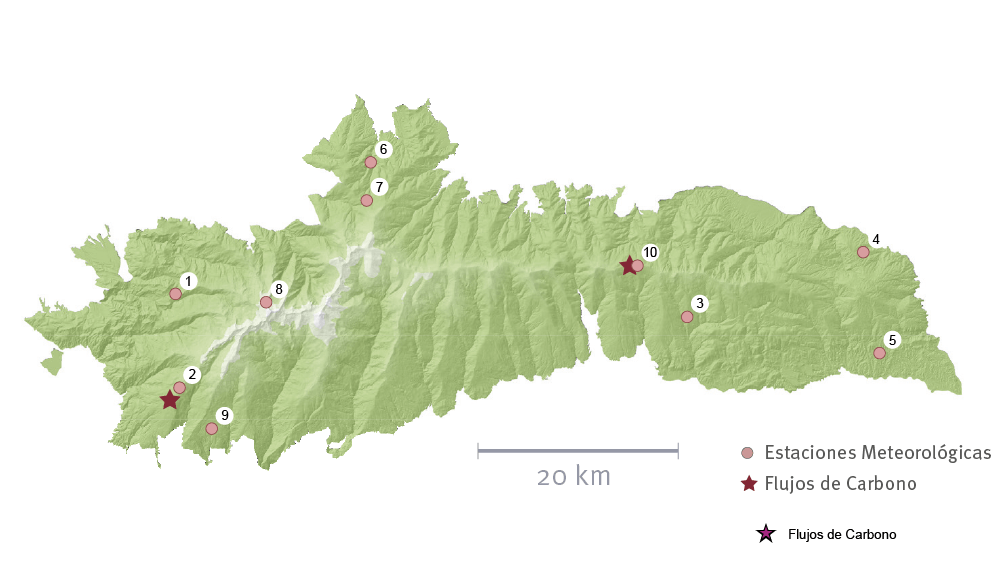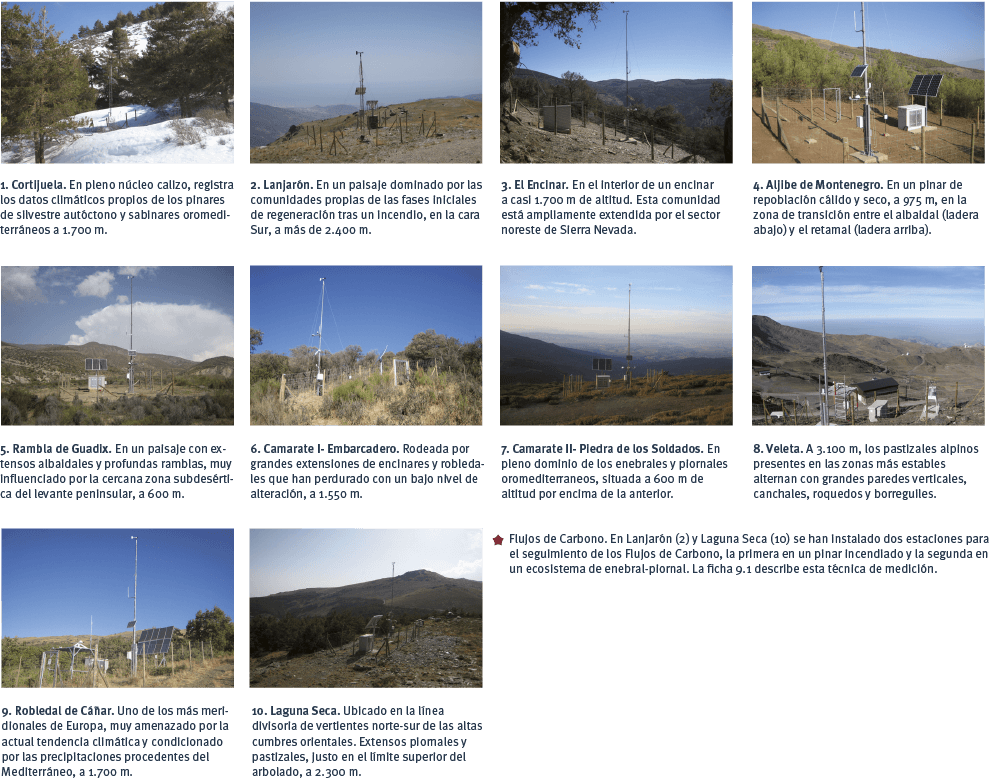Aims
With the network of multiparametric weather stations, time series of climatic data are continually recorded and stored to be consulted by managers and researchers. This information is fundamental for the interpretation of the results of the rest of the methodologies of the Sierra Nevada Global-Change Observatory.
Method and effort
A network of mountain weather stations that fulfil certain requirements set by the Global Climate-Observing Systems (GCOS) has been installed. Two of these were installed by the National Park of Sierra Nevada (Cortijuela and Lanjarón), while the other eight belong to the Autonomous Agency of National Parks. These provide a continuous record of the different conventional meteorological parameters as well as other specific ones to evaluate environmental processes.

The equipment is situated in representative locations of the main ecosystems of Sierra Nevada, distributed between 600 and 3100 m a.s.l. All of these, except the one located in the foothills of Veleta Peak, are autonomous and are supplied with energy by solar panels.


Periodicity
All the data are continuously recorded. The mean, maximum, and minimum values are stored with accumulations of each of the parameters measured with at 10-min intervals.
References
WMO, 2008a. Future climate change research and observations: GCOS, WCRP and IGBP Learning from the IPCC Fourth Assessment Report. GCOS-117, WCRP-127, IGBP Report No. 58 (WMO/TD No. 1418). January 2008.
WMO, 2008b. Guide to meteorological instruments and methods of observation. WMO-No.8. Seventh edition. World Meteorological Organization, Publications Board.